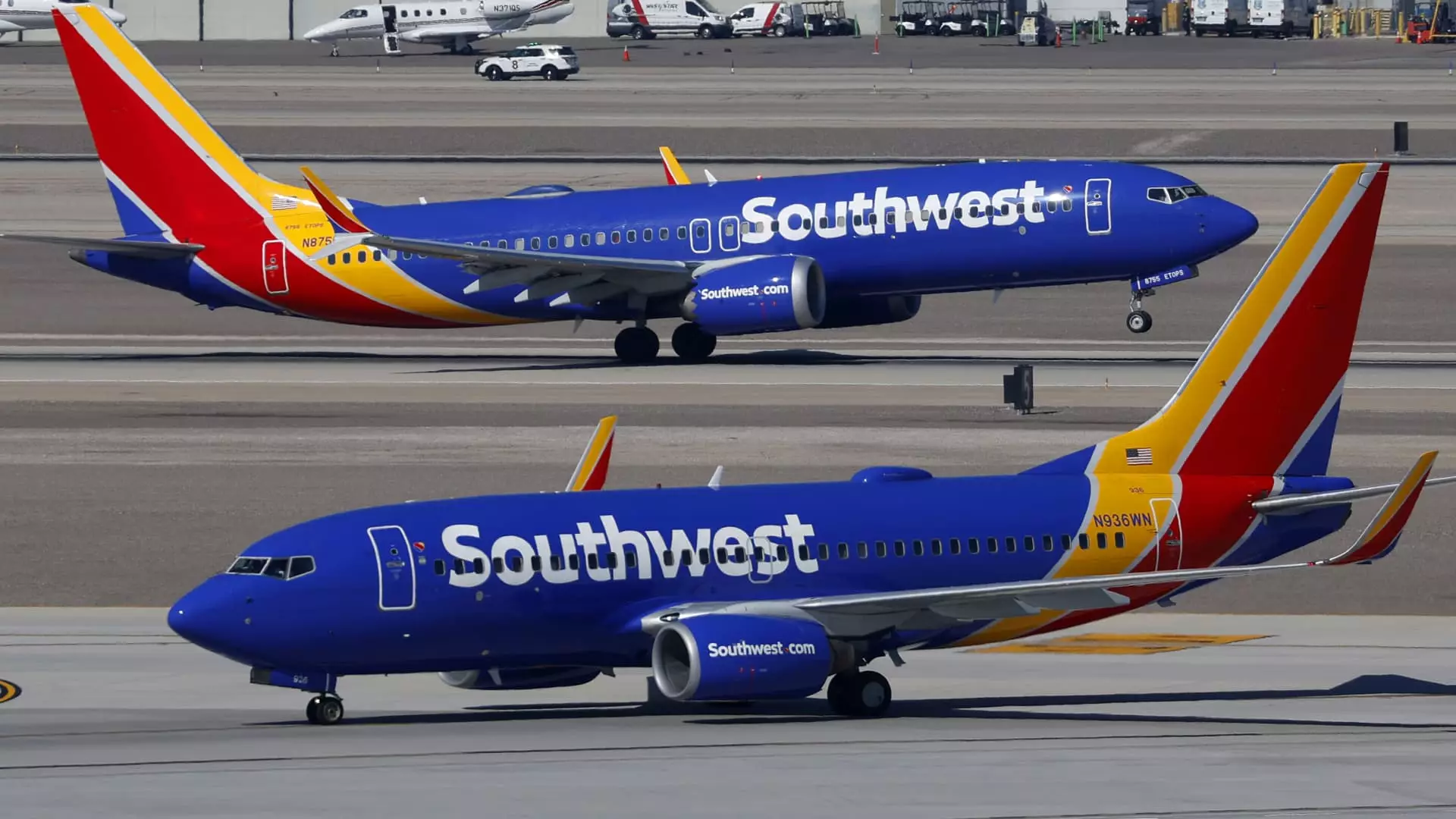Southwest Airlines’ decision to introduce assigned seating marks a seismic shift in its legendary open seating policy. For over 50 years, the airline has distinguished itself by eschewing assigned seats, promoting a free-for-all boarding process that fostered a unique sense of immediacy and egalitarianism among passengers. Now, faced with mounting pressures to boost revenue and modernize its business model, Southwest is caving to industry norms—albeit in a way that risks undermining the very ethos that set it apart. While some may see this as a pragmatic move, it’s ultimately a concerning retreat that reveals not just strategic miscalculations but an underlying vulnerability in Southwest’s competitive positioning.
The Erosion of the ‘Southwest Way’: Losing Its Differentiating Edge
The airline’s open seating was more than a policy—it was part of Southwest’s identity, a gesture that resonated with travelers seeking simplicity, fairness, and a departure from the hijinks of allocated seating. By shifting to a structured, seat-assigned system, Southwest risks stripping away this core characteristic. The once-loyal customers who prized flexibility and spontaneity may feel betrayed, leading to a potential erosion of brand loyalty. Furthermore, this move aligns Southwest more closely with rivals like American, Delta, or United, who have long incorporated assigned seating. The gap that made Southwest distinct is shrinking, possibly diluting its appeal among budget-conscious travelers who appreciate its no-frills approach. From a competitive standpoint, this is a gamble—the airline must convince passengers that its new system offers genuine improvements, not merely a compromised version of its former self.
Financial Motivation Versus Customer Loyalty: A False Choice?
Southwest’s leaders claim that seat assignments and new fare strategies will generate hundreds of millions in additional revenue, a critical necessity in a highly competitive and profit-driven industry. However, this focus on short-term gains reveals a short-sighted perspective that could jeopardize long-term loyalty. The airline’s other recent moves—charging for checked bags and introducing tiered fare classes—signal a shift towards a more transactional relationship with passengers. While these measures might boost quarterly earnings, they risk alienating core customers, especially those who valued Southwest’s inclusive, customer-first philosophy. It’s a classic corporate trade-off: revenue vs. reputation. In prioritizing immediate profits, Southwest may inadvertently diminish the brand equity it built during decades of customer-centric policies.
The Boarding Process: From Spontaneity to Structure—A Loss of Charm
One of Southwest’s most iconic features was the lively, spontaneous boarding chaos that created a sense of unpredictability and community. Now, this will be replaced by a segmented boarding system, with priorities based on status, ticket type, and other variables. While this aims to improve efficiency and revenue, it strips away the fun and camaraderie that made flying Southwest unique. The boarding process increasingly resembles its more traditional rivals, eroding what some would argue was its competitive advantage: a dynamic, laid-back customer experience. This “orderly” approach may improve turnarounds, but it does so at the expense of the airline’s soul—its reputation as an airline for the people, not just profit.
A Risky Strategy in a Changing Industry Landscape
The airline industry is in flux, with recently announced mergers, labor disputes, and fluctuating travel demand. Southwest’s decision to implement assigned seats and additional fees comes at a delicate time. Rather than innovating based on passenger preferences or service excellence, it appears to be reacting defensively—layering complexity onto its foundational simplicity. Whether this move will yield the anticipated financial windfall remains to be seen. If the airline’s loyalists drift away, tempted by competitors offering less fees and more flexible seating, Southwest could find itself caught in a downward spiral—ironic for a carrier that built its reputation on simplicity and customer advocacy.
Southwest’s forced departure from open seating signals more than a tactical shift; it exposes a vulnerability within the airline’s strategic core. The move is driven less by customer demand than a desire for short-term financial relief, risking long-term brand identity and loyalty. In an industry where differentiation is vital, surrendering its most distinctive trait could prove catastrophic. The airline must reconcile its quest for profitability with its legacy of customer-centric innovation—or face the peril of fading into the background as just another carrier trying to keep up rather than leading the way.

